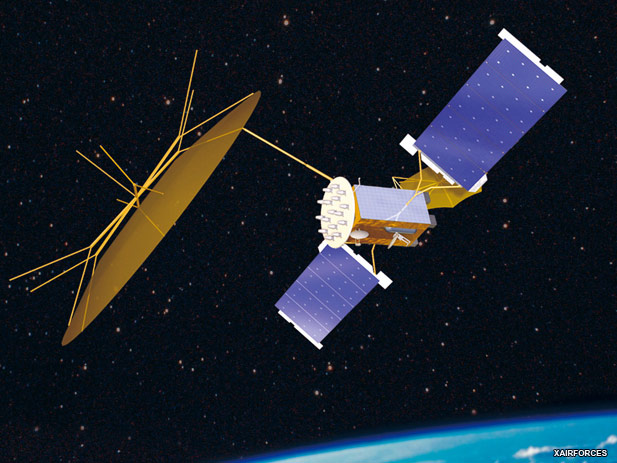
Environmental Testing of New US Military Communications Satellite

Lockheed Martin [NYSE: LMT] has successfully completed thermal vacuum testing of the U.S. Navy’s first Mobile User Objective System (MUOS) satellite, a major program milestone that validates spacecraft performance in a simulated test-like-you-fly space environment.
A next-generation narrowband tactical satellite communications system, MUOS will provide significantly improved and assured communications for mobile warfighters. It will augment and ultimately replace the current UHF system and provide 10 times more communications capability to the user, including simultaneous voice, video and data.
Conducted inside Lockheed Martin's Dual Entry Large Thermal Altitude chamber, the MUOS spacecraft was stressed in a vacuum environment at the extreme hot and cold temperatures it will experience throughout its design life.
This major milestone was the culmination of an extensive test program that proves the spacecraft’s overall design, quality of workmanship and survivability during space vehicle launching and on-orbit operation environments.
Thermal vacuum testing of the first MUOS satellite was completed later than originally planned as the team worked to validate the performance of this state-of-the-art spacecraft. While issues with specific legacy payload components were encountered during the test, Lockheed Martin was able to resolve each issue prior to completing thermal vacuum testing and entering final integration system testing in preparation for delivery.
“The team worked extremely hard to complete this important test phase in a disciplined and timely fashion to support our customer’s launch needs,” said Mark Pasquale, Lockheed Martin vice president and MUOS program manager. “The test confirms the spacecraft’s ability to provide critical on-the-move communications for our deployed forces in remote and rugged locations and represents a pivotal moment toward achieving mission success on this program.”
The first MUOS satellite, along with the associated ground system, is on track to support launch in the first quarter of 2012.
Lockheed Martin Space Systems, Sunnyvale, Calif., the MUOS prime contractor and system integrator, is leading a team that includes General Dynamics C4 Systems, Scottsdale, Ariz., and Boeing Defense, Space and Security, El Segundo, Calif. The Navy’s Program Executive Office for Space Systems, Chantilly, Va., and its Navy Communications Satellite Program Office, San Diego, Calif., are responsible for the MUOS program.
Headquartered in Bethesda, Md., Lockheed Martin is a global security company that employs about 126,000 people worldwide and is principally engaged in the research, design, development, manufacture, integration and sustainment of advanced technology systems, products and services. The Corporation's 2010 sales from continuing operations were $45.8 billion.
Mobile User Objective System (MUOS)
The Mobile User Objective System (MUOS) is a next-generation narrowband tactical satellite communications system designed to significantly improve ground communications for U.S. forces on the move. MUOS will replace the current narrowband tactical satellite communications system known as the Ultra High Frequency Follow-On (UFO) system.
Lockheed Martin Space Systems, Sunnyvale, Ca., is the prime contractor and systems integrator for the MUOS program. On Sept. 24, 2004, the company was awarded a $2.1 billion contract to build the first two satellites and associated ground control elements for the MUOS system. The contract also provides for options on three additional spacecraft. With all options exercised, the contract for up to five satellites has a total potential value of $3.26 billion.
MUOS satellites will be developed at the company's Commercial Space Systems unit in Newtown, Pa.; final assembly and test will occur in Sunnyvale. Lockheed Martin's award-winning A2100 bus, which has achieved over 100 years of on-orbit service, will serve as the MUOS spacecraft platform.
Source: SUNNYVALE, Calif, September 6th, 2011 -- www.lockheedmartin.com
Photo: The first Mobile User Objective System (MUOS) satellite exits Lockheed Martin's Dual Entry Large Thermal Altitude chamber, a vacuum environment that simulates the hot and cold temperatures the satellite will experience throughout its design life. [Lockheed Martin]
(8.09.2011)
|